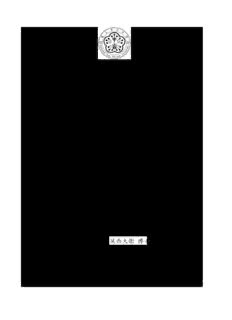
An investigation of culture shock and cultural adjustment in Britain, a case study of non-UK ... PDF
Preview An investigation of culture shock and cultural adjustment in Britain, a case study of non-UK ...
國立中山大學人力資源管理全英語碩士學位學程 碩士論文 Global Human Resource Management English MBA Program National Sun Yat-sen University Master Thesis 英國文化衝擊以及文化適應調查 – 諾丁漢特倫特大學非英 國學者個案研究 An investigation of culture shock and cultural adjustment in Britain, a case study of non-UK academics at Nottingham Trent University 研究生:克蘿 Chloe Ophelie Justine Tiozzo 指導教授﹕莫西大衛 博士 Dr. David McConville 中華民國 107 年 04 月 April 2018 i ii iii AKNOWLEDGEMENTS I would like to thank my supervisor from Nottingham Trent University, Kayode Odusanya, and my supervisor from National Sun Yat-Sen University, Dr. David McConville, for their guidance and their feedback throughout my research study. I would like to thank the International Development Office at Nottingham Trent University and particularly Annabel Mitchell, for their assistance during the participant recruitment process. I would also like to thank Participant 2 for introducing me to further participants, for confidentiality and anonymous purposes of this research his name will not be disclosed. iv 摘 要 關於概念化的旅居者文化適應仍然主要集中在留學海外接受高等教育的學者。然而, 對於海外求學的文化適應情形有相關聯的研究為數並不多。而這類族群是可以成為潛 在的永久居民,因此對於這類族群不論是從個人以及專業層面上來了解他們的文化適 應情形是不可或缺的。Lysgaard 的 U 型理論說明了這些移民在接觸外國文化時的文化 調整模式。此理論由動態的自我轉化組成,其中包括了興奮、壓力、衝擊以及適應。 本研究主要研究非英國籍學者在英國的文化適應情形,此外具體的參與者是正在諾丁 漢特倫特大學的非英國籍學者。除此之外,本研究的次要目的為通過半結構式調查來 對 Lysgaard 的 U 型理論進行驗證。最後,為了瞭解如何促進外籍員工的文化適應以及 優化其專業表現外,同時也改善與本國同事之間的互動模式,因此大學內部組織的相 關幫助將會被檢視(相關幫助是指對非英國學者所提供的幫助)。從分析中發現到, Lysgaard 的 U 型理論的第一階段(幸福感)並不是顯而易見的。考慮到文獻中的多樣模 組,並結合了 Lysgaard 的 U 型理論,第一階段可以被劃分為三個獨立情況:幸福感、 壓力,幸福與壓力。此外,Berry 的多維度文化適應模式對於 Lysgaard 理論的最後階 段(獨立階段)的理解非常有幫助。因此,為了能突破最後的獨立階段,並同時了解參 與者在結束文化適應階段時的過程,Berry 的理論也被應用在此模型中。 關鍵詞: 文化適應;U曲線理論;學者;諾丁漢特倫特大學 v ABSTRACT Conceptualisations of sojourners cultural adjustment remain mostly focused on students studying at a foreign Higher Education institution. However, limited amounts of studies have researched the cultural adjustment journey of academics in a foreign country. As they can be potential permanent resident, it is important to understand their cultural adjustment journey on a personal and professional level. Lysgaard’s U-curve theory illustrates a model of cultural adjustment for immigrants as they are exposed to a foreign culture. This theory comprises dynamic self- transformation growth which involves excitement, stress, shock and adaptation. This study aims to understand non-UK academics cultural adjustment journey in Britain and in this specific case with the help of participants who are current non-British academics at Nottingham Trent University. Additionally, the secondary purpose of the study is also to check the validation of Lysgaard’s U-curve theory by pursuing semi-structured interviews with participants. Finally, organisational support within the university, in this case support provided to non-UK academics, will be investigated to understand how to facilitate cultural adaptation of foreign staff to optimise their professional performance and improve interactions between native and foreign colleagues. From the analysis it was found that the first stage of Lysgaard’s U-curve theory (Euphoria) was not always apparent in the study. By considering multiple models in the literature, in conjunction with Lysgaard’s U-curve theory, the first stage can be partitioned into three separate cases: Euphoria, Stress, Euphoria and Stress. Additionally, Berry’s multidimensional acculturation model appeared to be useful in understanding the final stage of Lysgaard’s theory, the Independent stage. As a result, Berry’s theory was also used in the model in order to breakout the Independent stage and understand what kind of acculturation the participants have developed at the end of their cultural adjustment journey. Keywords: cultural adjustment; U-curve theory; academics; Nottingham Trent University vi TABLE OF CONTENTS Aknowledgements ..................................................................................................................... iv 摘 要 ........................................................................................................................................... v Abstract ..................................................................................................................................... vi Table of Contents ..................................................................................................................... vii Table of Figures ......................................................................................................................... x Table of Tables .......................................................................................................................... xi Abbreviations ............................................................................................................................. 1 Introduction ................................................................................................................................ 2 Critical Literature Review .......................................................................................................... 6 Culture .................................................................................................................................... 6 Culture shock .......................................................................................................................... 7 Cultural adjustment ................................................................................................................. 8 Cultural adjustment theories ................................................................................................... 9 Acculturation ........................................................................................................................ 10 International academics ........................................................................................................ 11 Social and organisational support ......................................................................................... 12 Research questions ............................................................................................................... 13 Research Context ...................................................................................................................... 14 Research Methodology and Methods ....................................................................................... 16 Philosophical Underpinning ................................................................................................. 16 vii Research Approach & Research Design ............................................................................... 17 Research Methods ................................................................................................................. 17 Sampling Methods ................................................................................................................ 18 Access Issues ........................................................................................................................ 19 Data Analysis Methods ......................................................................................................... 20 Considerations on Validity and Reliability .......................................................................... 20 Data Analysis and Illustration .................................................................................................. 22 Demographic questions ........................................................................................................ 22 Semi-structured Interviews ................................................................................................... 28 Pre-Arrival ........................................................................................................................ 29 Arrival ............................................................................................................................... 32 British Environment .......................................................................................................... 35 Language and Socialisation .............................................................................................. 38 University Experience ....................................................................................................... 39 Living in Britain ................................................................................................................ 42 Culture Shock .................................................................................................................... 45 Acculturation ..................................................................................................................... 46 Organisational Support ..................................................................................................... 47 Discussion, Conclusion & Recommendations ......................................................................... 49 Challenges & Limitations of the Study .................................................................................... 51 References ................................................................................................................................ 53 Appendices ............................................................................................................................... 57 viii Appendix #1: NBS Ethics 03 #1 and #2 ............................................................................... 57 Appendix #2: Participants Ethics Consent Form .................................................................. 70 Appendix #3: Interview Questions ....................................................................................... 73 Appendix #4: Participant 1 Interview ................................................................................... 75 Appendix #5: Participant 2 Interview ................................................................................... 80 Appendix #6: Participant 3 Interview ................................................................................... 87 Appendix #7: Participant 4 Interview ................................................................................... 94 Appendix #8: Participant 5 Interview ................................................................................. 100 Appendix #9: Participant 6 Interview ................................................................................. 107 Appendix #10: Participant 7 Interview ............................................................................... 115 Appendix #11: Participant 8 Interview ............................................................................... 121 Appendix #12: Participant 9 Interview ............................................................................... 129 Appendix #13: Participant 10 Interview ............................................................................. 135 Appendix #14: Participant 11 Interview ............................................................................. 140 Appendix #15: Participant 12 Interview ............................................................................. 149 Appendix #16: Participant 13 Interview ............................................................................. 155 ix
Description: